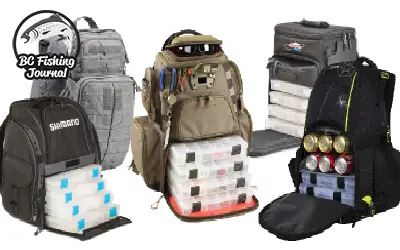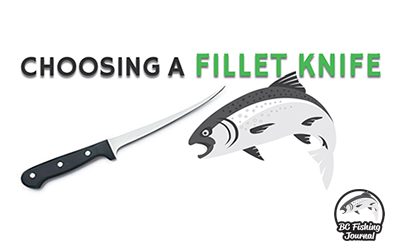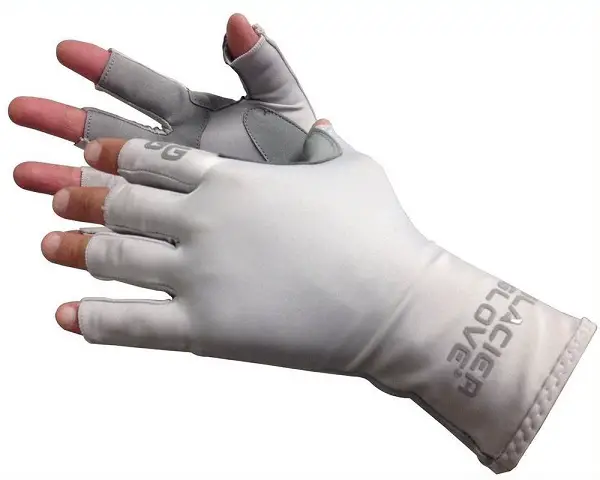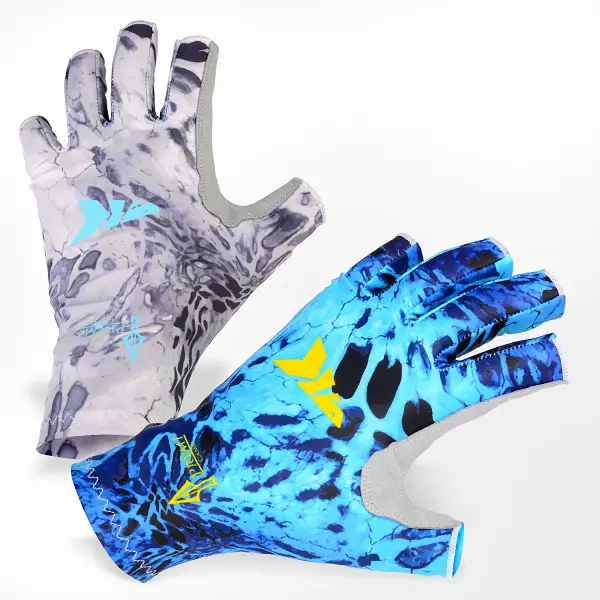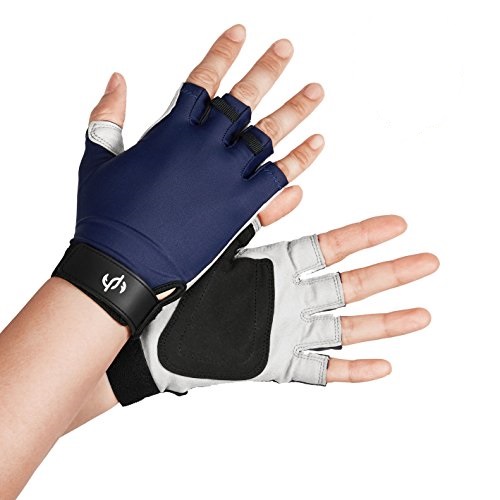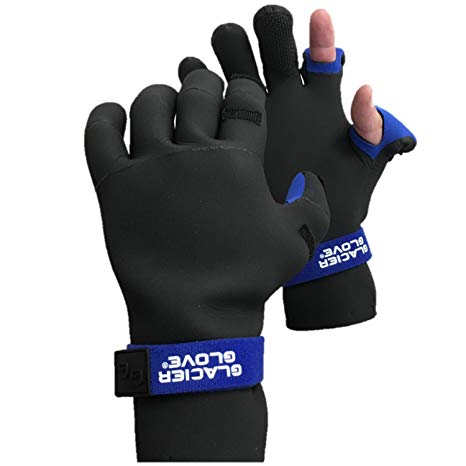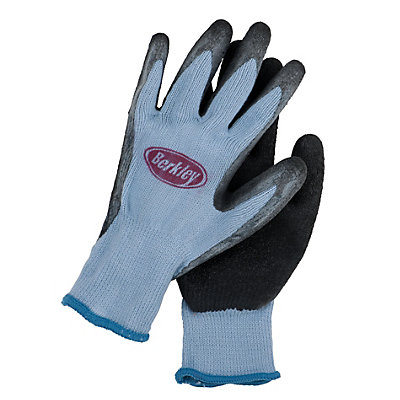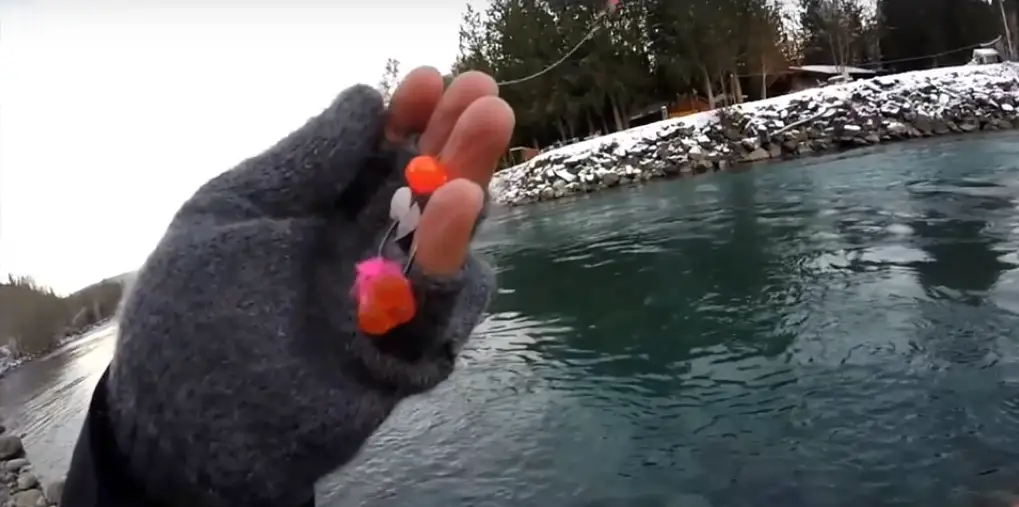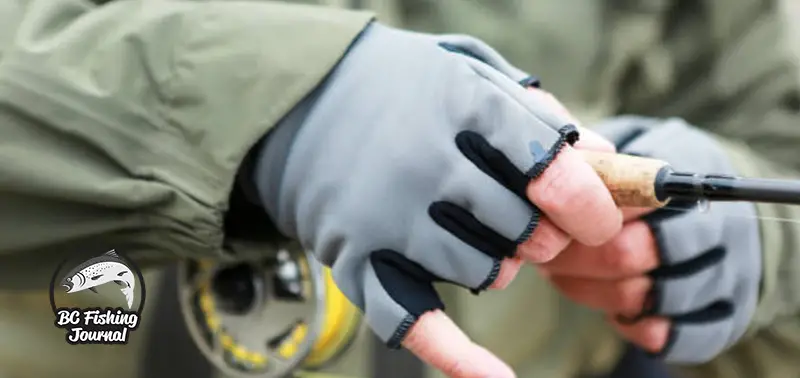
A Guide To The Best Fishing Gloves
Have you found that wearing gloves while fishing have been a hindrance? If you’ve had incompatible gloves while fishing I think you might agree it can be frustrating. I totally get this as I’ve had miserable days trying to keep my hands warm in the winter. Perhaps you’ve had had some other experiences with protecting your hands from the sun. Whatever the case, in this post I’ll outline some important guidelines for choosing the right fishing gloves for either hot or cold weather conditions. I’ve also included some small reviews of our best fishing gloves for a variety of fishing scenarios.
Our Top Rated Fishing Gloves
Finger Dexterity
Great
Great
Great
Average
Poor
Weather
Warm
Warm
Warm
Cold
Not Applicable
Highlights
- UV protection
- Great grip
- Light weight and flexible material
- UV Protection
- Tabs for easy glove removal
- Breathable material
- UV protection
- Ultra lightweight
- Great multi-purpose glove
- Waterproof neoprene (2mm) material
-
Great for cold weather conditions
-
Designed for handling and cleaning fish
-
Heavy-duty material
-
Washable
What To Look For In Fishing Gloves
Many anglers are confused by the very idea of wearing gloves while fishing, but a good pair of fishing gloves can quickly become an indispensable part of your gear. They keep your hands warm and protect them from the sun, bugs and cuts from line. Some gloves are designed to improve your grip on small gear like line and hooks.
Here are the main things you should consider when shopping for a pair of fishing gloves. I recommend getting a few pairs so you’ll have adequate hand protection in any situation.
Waterproof fishing gloves
Material! This should be your first consideration. Don’t buy a pair just because they look cool. You need gloves that are either waterproof or quick-drying. Also think about what kind of insulation you need. Ice fishing or fishing in cold weather obviously requires warm gloves, but you don’t want thick wool gloves while fishing for Bonita in the Gulf.
Most fishing gloves are made of one or more of the materials we’ll talk about here.
Neoprene gloves are completely waterproof and offer medium insulation from the cold. They may be a good choice for you if find your hands in the water often, like when catching and releasing one bluegill after another.
Fleece is often used as insulation for fishing gloves. That’s a good use for it, because it only takes a thin layer to keep your hands warm. The thinner the gloves are, the easier it is to tie line and do other stuff that requires manual dexterity.
Wool is famous for its insulating qualities. Unfortunately, wool is bulky and about as water-resistant as a sea sponge. It’s sometimes used as an insulating material in fishing gloves, but it makes the gloves too puffy. It’s best to avoid wool.
Almost all fishing gloves, except for neoprene ones, are made at least partly from stretchy synthetic materials like spandex or Lycra. These fabrics offer a superior fit and total flexibility, but no insulation or grip. That’s why good gloves are usually made of one of these with a non-slip coating and sometimes an insulating fabric.
Best cold weather fishing gloves
Have you ever tried to tie a double clinch knot while wearing mittens? Of course not, but it can be just as hard while wearing inferior gloves with thick, bulky fingers. Fingerless gloves are nearly a must when fishing, but for those freezing winter fishing days you do need some alternatives. For me, in extreme cold weather I still use fingerless gloves but with a foldable mitten cover (see image). My thumb will not be fingerless but my other 4 fingers will be. So the best cold weather gloves are ones that are still fingerless but have the extra protection available (e.g. Velcro protection on the top of the hand).
Fit
If they don’t fit well, you’ll only wear them once. Loose gloves inhibit fine finger movement. Gloves that are too tight do too, and they restrict blood flow to your hands. That will actually make your hands colder than not wearing gloves at all.
If you go shopping for gloves at a store, try a pair that feels slightly too big. Put them on and wear them while you shop. They should still fit well and feel comfortable after ten minutes.
Pay very close attention to the finger tips. Any excess there will really get in the way when you go to tie a knot, bait a hook or open a beer.
You can’t try on gloves when shopping for them online, but don’t pass up on those great deals and the awesome selection. Check out a site’s exchange policy before you click the order button. Some sites have liberal exchange policies, but others don’t allow them at all.
These gloves are also made of spandex, but they are thicker than Fishing Tree’s entry on this list, and they have fingers that cover almost up to the tips. That makes them better for colder weather. Your fingertips are what you use the most when doing fine work like stringing line through eyelets and such, so you’ll still have that maneuverability you need.
The palms are also protected with faux leather, but the leather’s placement is more strategic. This allows for more comfortable clenching, like when gripping a rod or holding a fish to remove a hook from its mouth. There is no layer of PVC or anything else between the palm’s leather and the spandex, so these gloves don’t have that strong feel to them. But that meatiness really is a matter of personal preference. The lighter feel of these make them feel thin, even though they are actually thicker than most other spandex gloves.
I’d use these gloves for autumn or mild winter fishing on open water, but they’re not quite warm enough for ice fishing.
You may like these gloves if you’re looking for a simple pair to protect your hands from sun and wind. They’re made of thin spandex and have no insulation, so they’re good for summer fishing.
At first I thought that this line of gloves were sized wrong, but they are actually made to fit very tightly. That’s a nice feature for just about any summertime fishing task. They’re fingerless, which is to be expected in fishing gloves designed for warm weather.
Spandex is a little slippery and can wear easily when subjected to friction, so there has to be some kind of protection on key areas of the glove if they are to last longer than one summer. The palms of these gloves feature thin patches of microfiber. That protects them without making them any stiffer than 100 percent spandex gloves. The only drawback is that microfiber offers little in the way of grip.
Here is a basic pair of spandex fishing gloves. They are fingerless for optimum fine motor acuity, and they have faux leather palms for extra strength and better grip. The fake leather isn’t as tacky as neoprene, which makes them great for handling cork rod handles. Trust me on this one. Neoprene and cork seem to be magically attracted to one another, and they seek to bind on a molecular level.
One thing I really like about these is the double-layer palm. Underneath the faux leather is a thin film of PVC. It doesn’t add much durability, but it does give the gloves a heftier feel. That’s nice when gripping a boat steering wheel or a thinner rod handle.
These are the gloves I would wear for ice fishing or angling in very cold weather. They are made of thin neoprene with fleece insulation. The thick, heavy Velcro wrist straps help keep your wrists warm and prevent water from seeping in that way.
The thumb and index fingers are slit so you can slip your fingers in and out fairly easily. The thing about the finger slits on these gloves that impresses me is the elastic around them. Not only does that keep water from getting into the slits and in the gloves, it makes for a tighter fit around the fingers so you don’t have excess material getting bunched up and in your way.
The neoprene exterior offers a pretty good grip for both the palms and fingers.
You may worry about the fleece lining getting wet if your hands sweat. Well, fleece dries so quickly that you can turn the gloves inside out and let them sit for a while. They’ll be dry in a few minutes. That’s why I like fleece!
I’ll tell you right off the bat that you can’t tie line or anything like that while wearing these. But that’s not what they’re made for. These thick, strong gloves are designed for a no-slip grip and protection from spines, barbs, hooks and other little sharp things. They’re good for handling and cleaning slippery fish.
They’re water-resistant, not water-proof, so your hands may get wet if you actually stick them in the water for a while. But that’s true of all gloves that are not covered completely in neoprene.
These ones can keep your hands warm in very cold weather, so they’re suitable for ice fishing.
Final Conclusion for Best Fishing Gloves
If you’re looking for fishing gloves to protect from the sun, high finger dexterity and grip I’d go with Glacier Islamorada Sun Fishing Gloves. These will still provide that that sensitive palm feel with your rod and the fingerless tips give you the finger strength and feel with your line and reel.
If you’re looking for a cold weather glove for ice fishing, winter river fishing or cooler salt days I’ve recommend the waterproof and insulated neoprene Glacier Fishing Gloves. The neoprene won’t breath but will keep your fingers dry and warm. I also like the 2 fingerless option so there is some finger dexterity without exposing your entire hand to the conditions.
I hope this post was helpful for you, if you have any questions drop a comment or reach out to me on the contact page. Tight lines! Jesse
About the Author

My name is Jesse, I’ve been obsessed about fishing since I was a toddler trying to catch fish with my minnow net in any type of water. Today I have a passion to promote fishing in an educational, fun and respectful format.


